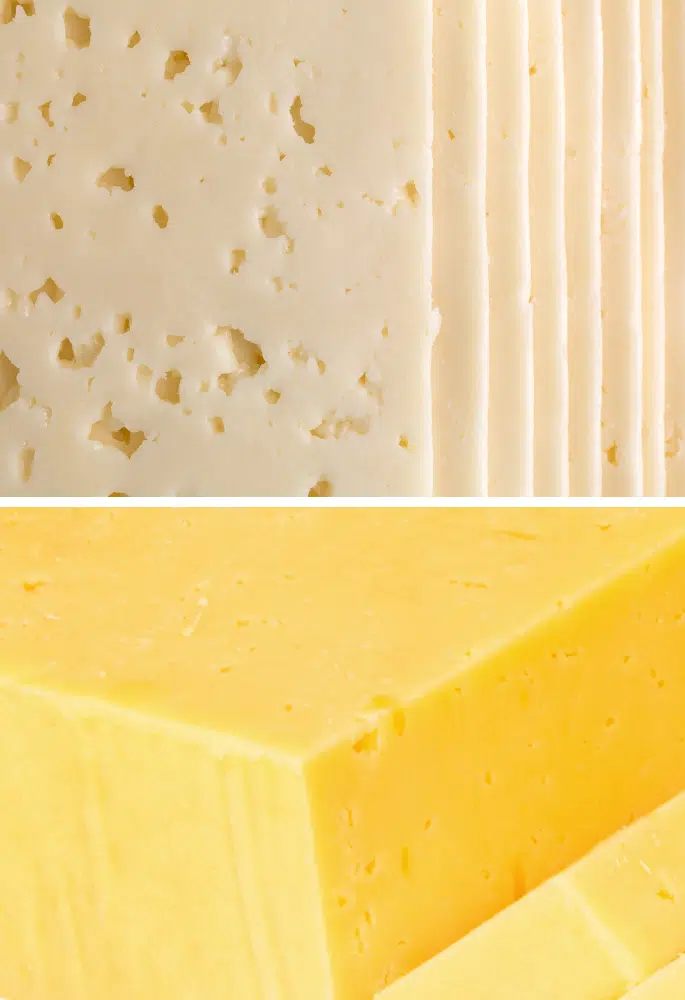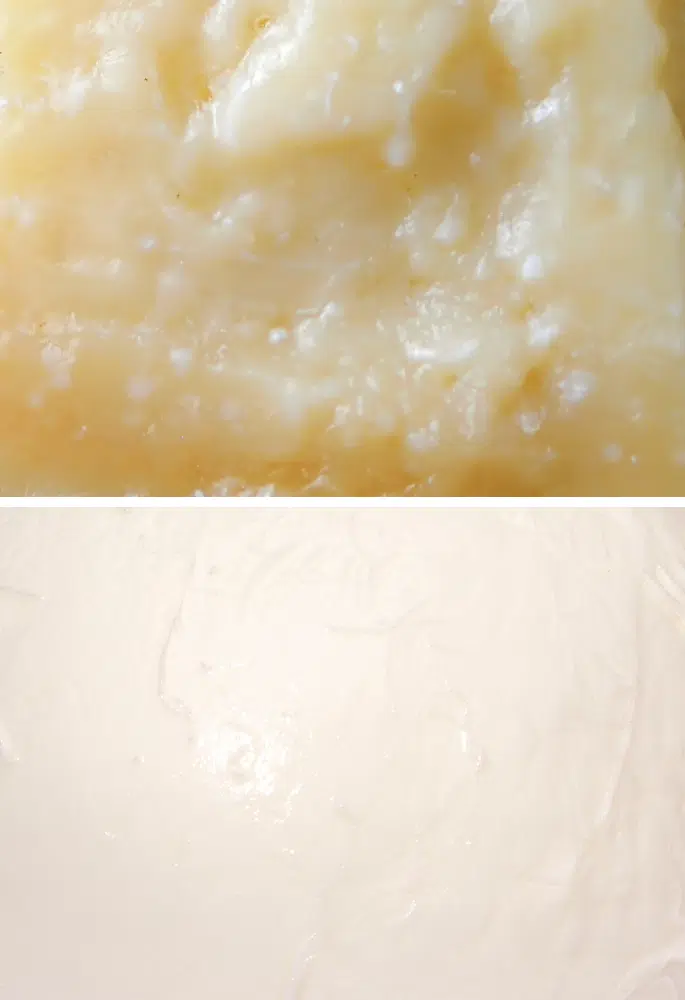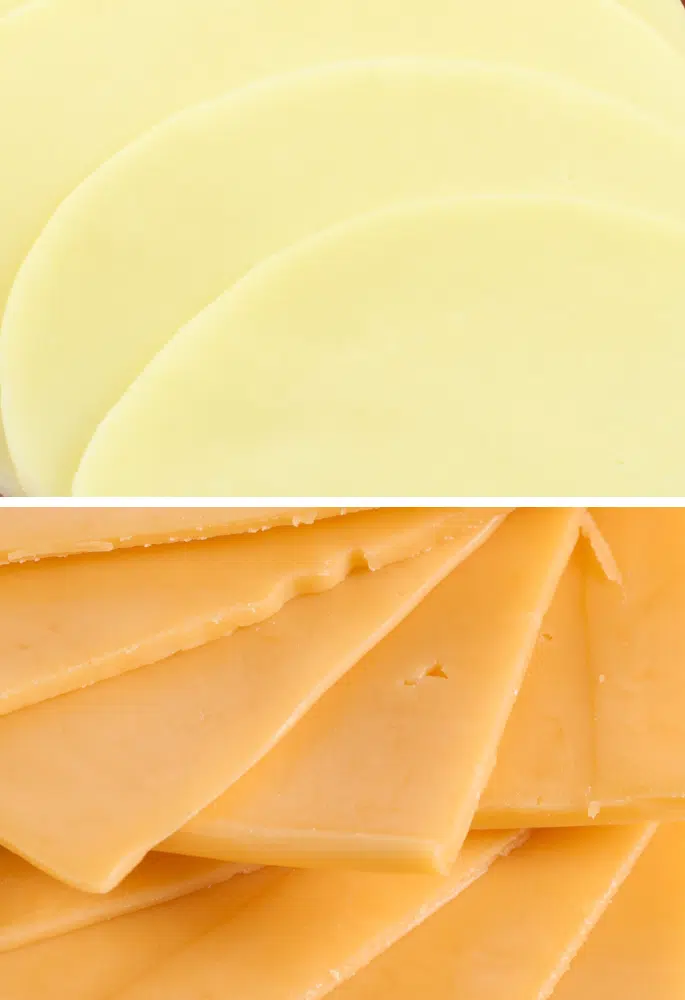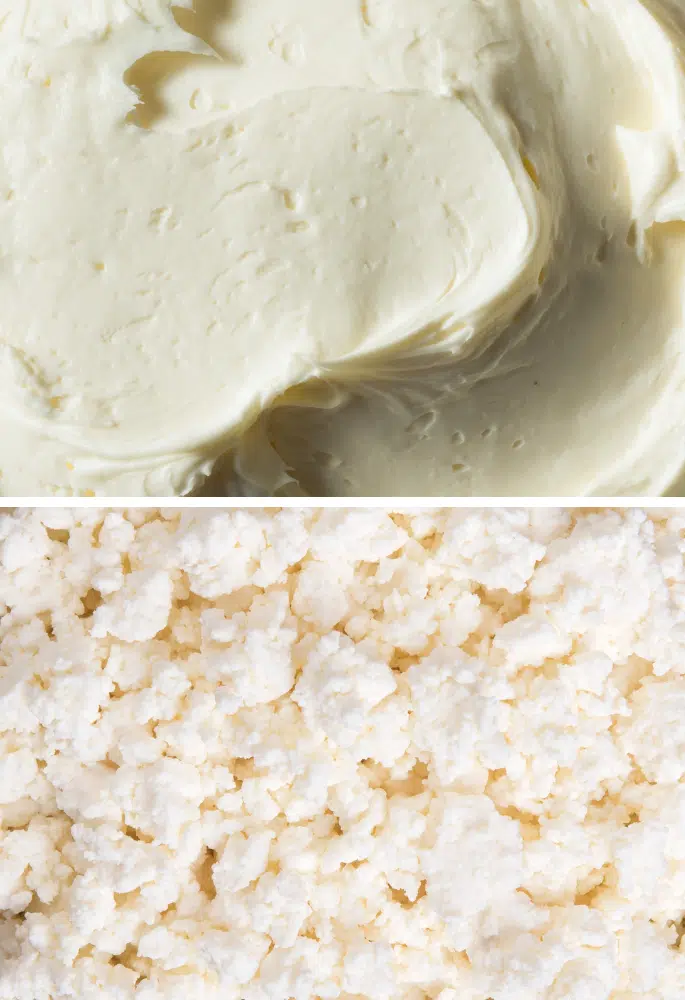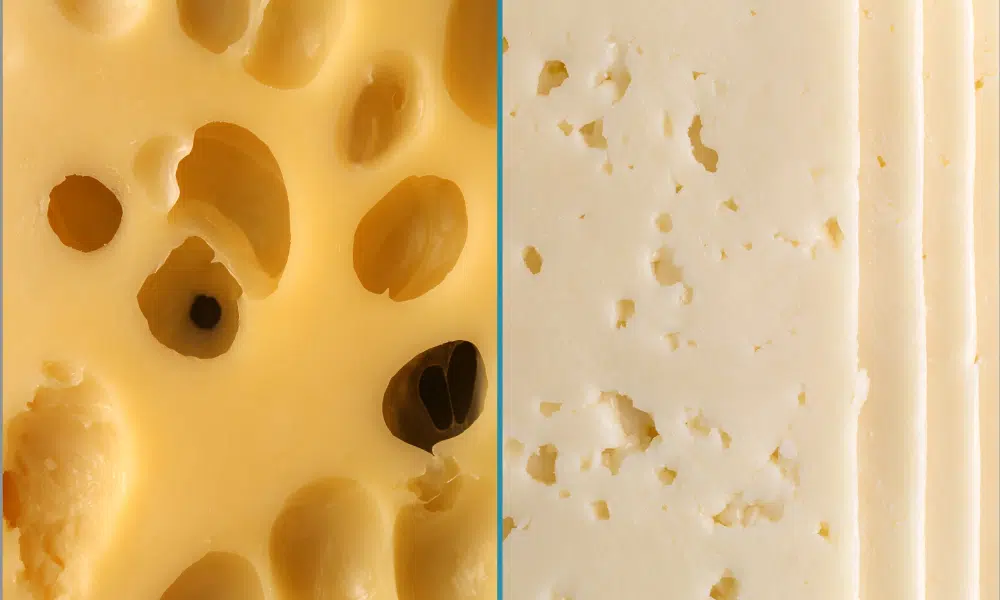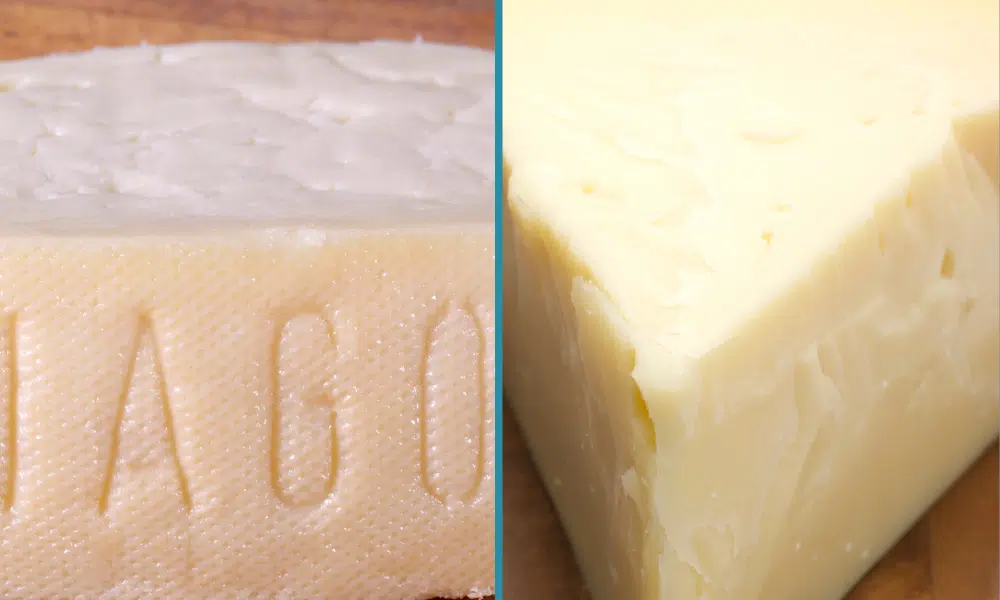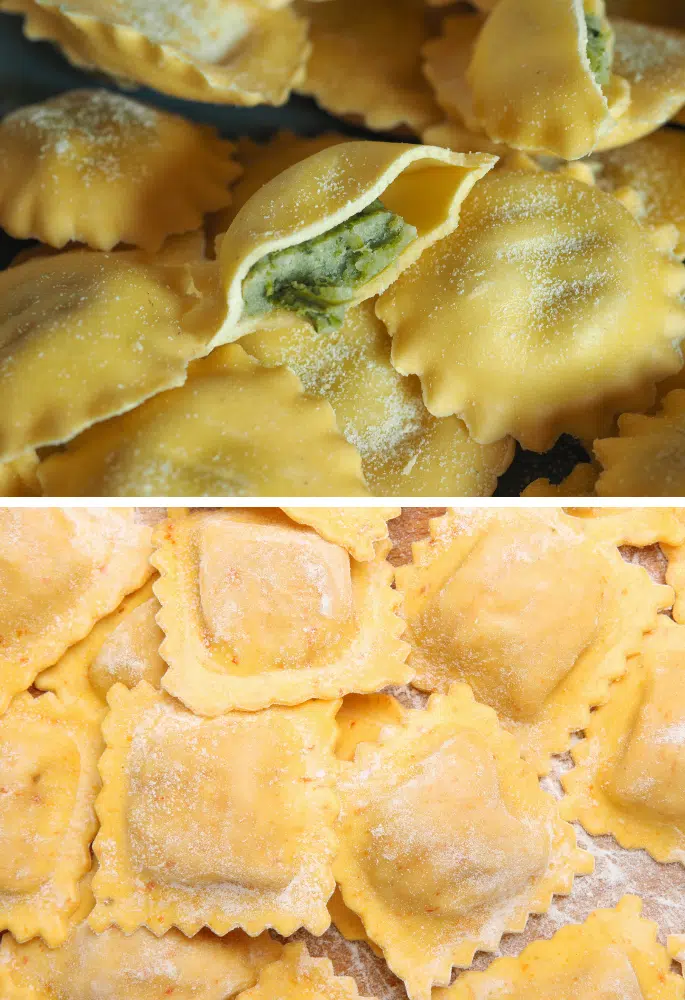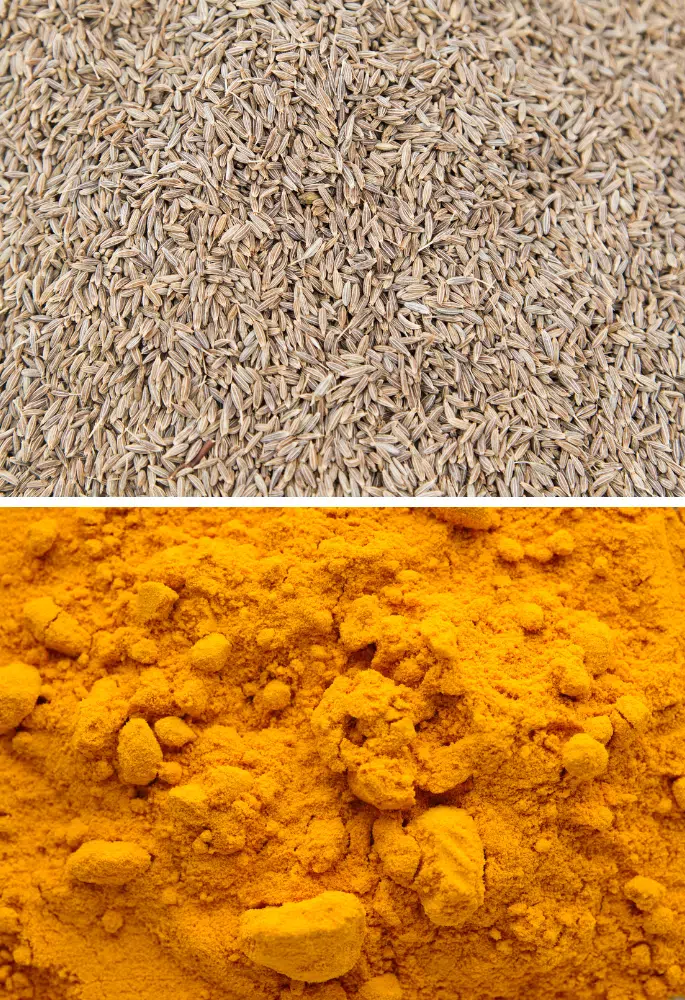Anyone who has ever enjoyed a pizza or tried their hand at a range of cheesy Italian pasta dishes should be more than familiar with one of the most well-known cheeses in the world: mozzarella.
But what you may not realize is that your favourite Italian takeaway could actually be using fontina on your pizza instead. Surely, these two cheeses cannot be that similar… right?
The most significant difference between fontina and mozzarella is their subtle flavours. Fontina has a slightly sweet and nutty aftertaste, while mozzarella is a milky cheese through and through.
What is Fontina?
Nowadays, variations of fontina cheese are made all over the world, from Denmark to Argentina. But, like all good cheeses, fontina is an Italian invention, traditionally made in the Alpine Italian region using unpasteurised cow’s milk.
This gives the cheese a moderate fat content which makes the cheese mild, even when aged.
Fontina is aged for at least 90 days, for 30 of which the cheese is washed with brine to create a rind. After 90 days, young fontina is still noticeably soft and easy to melt, often used in cheese dips and as fondue.
Mature fontina is aged for around 150 days and is much harder in texture, better suited for grating into pasta dishes and seasoning vegetables.
The longer that fontina is aged, the more obvious its slightly roasted nut flavour will become. However, fontina is primarily a mild cheese with its creamy texture masking most of its flavour no matter how long it is aged.
One of the main flavours of fontina is sweetness. This is a lot more noticeable in younger fontina but is not overwhelming, as the natural creaminess of the cheese dilutes some of that sweetness.
What is Mozzarella?
Traditional mozzarella is made using Italian water buffalo milk in the South of Italy. However, there are variations made from cow’s milk which tends to be cheaper as it is not true mozzarella.
When the cheese is made, its curds are kneaded and stretched to develop elasticity.
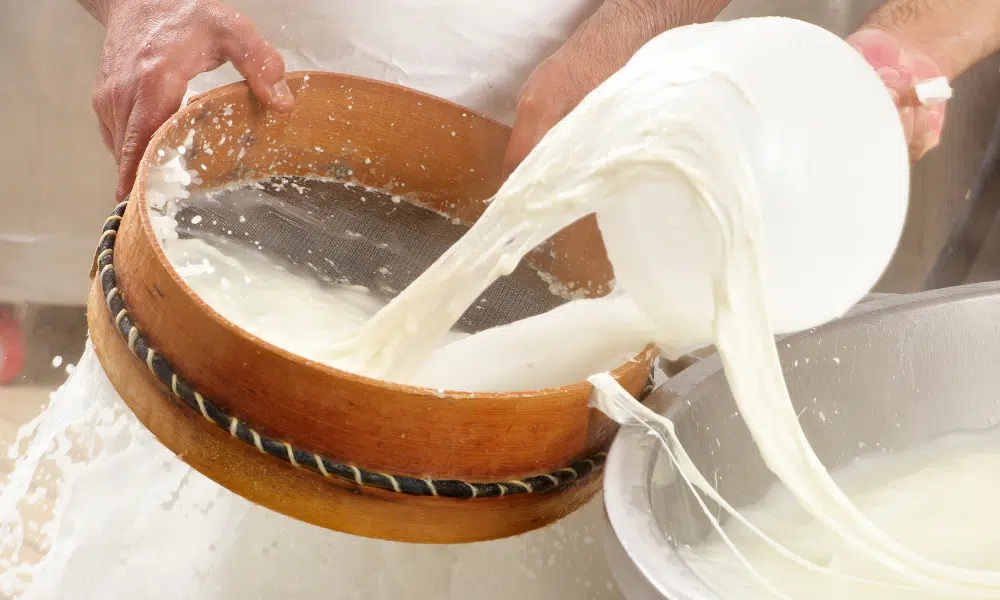
There are two forms of mozzarella cheese; the fresh variety and the shredded variety. The shredded kind is far more assessable outside of Italy, though it is likely not entirely true mozzarella.
Fresh mozzarella is silky soft and not aged at all, eaten as soon as it has been made. In both cases, mozzarella has a predominantly milky and very mild flavour.
Your local supermarket most likely sells fresh mozzarella concealed in liquid-filled bags to keep the cheese as fresh as possible after its production. Do not open the mozzarella or drain the liquid until you are ready to use it to keep the cheese fresh.
Similarities Between Fontina and Mozzarella
Fontina and mozzarella are so often confused with one another because of how many similarities they share. For example:
Italian Origin
Though traditionally made in different Italian regions, fontina and mozzarella are as Italian as cheese can get. They are included in a whole array of classic Italian dishes that simply would not taste the same without either.
Can you imagine pizza without mozzarella?!

Mild Flavours
A core, desirable characteristic of fontina and mozzarella is the fact that they have very little flavour. They are as mild types as cheese can get.
That isn’t to say that the cheese has no flavour, but more that they are mild enough to be used in a range of dishes and meals without overwhelming your plate.
Meltability
Young fontina is just as easy to melt as mozzarella, which is helped due to its creaminess. So much so that you could use either mozzarella or fontina to make various cheesy sauces or snacks.
Aged fontina does not melt as easily but is still easy to melt once it has been grated and added to a sauce.
Differences Between Fontina and Mozzarella
Just because fontina and mozzarella share some key similarities like their origins and textures, they have impactful differences that limit the compatibility of the cheese:
Ageing
What makes mozzarella such a unique cheese is that it is one of the only types of cheese that does not need to be aged. It can be eaten and enjoyed as soon as it has finished being prepared.
Though fontina has a shorter minimum ageing time than many other types of cheeses, it still needs at least 90 days before to allow the good bacteria in the cheese to work their magic.
Quality Protection
If you have ever visited Italy or even a specialised cheese store, the number of mozzarella varieties available may overwhelm you.
This is because there are several types of mozzarella cheese, each with its own classification and name that abides by a very strict classification system to ensure that true mozzarella is sold as it should be.
Fontina is also DOP protected but nowhere near as vigorously as there is less confusion about the cheese’s quality.
Flavour
Both fontina and mozzarella are mild cheeses, but they still have their own distinguishing tastes.
A bite of fontina will leave you with a hint of sweetness and nuttiness and develops into a roasted nut flavour once the fontina has been aged long enough.
Mozzarella, on the other hand, remains milky and creamy with very little other taste.
Moisture Content
Part of a cheese’s ageing process is the drying out stage, which helps reduce the cheese’s moisture content and increases its shelf life.
Because fontina is only aged for a minimum of 90 days and is rigorously washed with brine during those 90 days, it still contains enough moisture to have a soft, creamy texture.
However, compared to fontina, mozzarella has a significantly higher moisture content as it has no ageing. Even mozzarella that is sold abroad is kept in brine or water to help keep its moisture content high and its texture springy.
Fontina vs Mozzarella: Which Wins?
Now it’s time to vote for your favourite… Which of these two popular Italian cheese varieties could you not live without?
Do You Prefer Fontina or Mozzarella?
Fontina and Mozzarella FAQs
Do you have more questions about fontina and mozzarella? Then perhaps these will help:
Yes, fontina does melt. It melts at a fairly low temperature and will become nice and gooey once fully melted.
Of course! As a cheese that melts well, it works well on a pizza either in combination with mozzarella or on its own.
Sources
Where we obtain our information and verify the facts in this article:
The Spruce Eats
What is fresh mozzarella cheese
The Cheese Hub
What is fontina
Acacia may be a freelance writer by day, but they are a food fanatic by night. They are always trying out new recipes or finding different ways to elevate classical dishes. But their biggest culinary aim is to educate others on the basics of the kitchen so that they too can enjoy delicious food.


